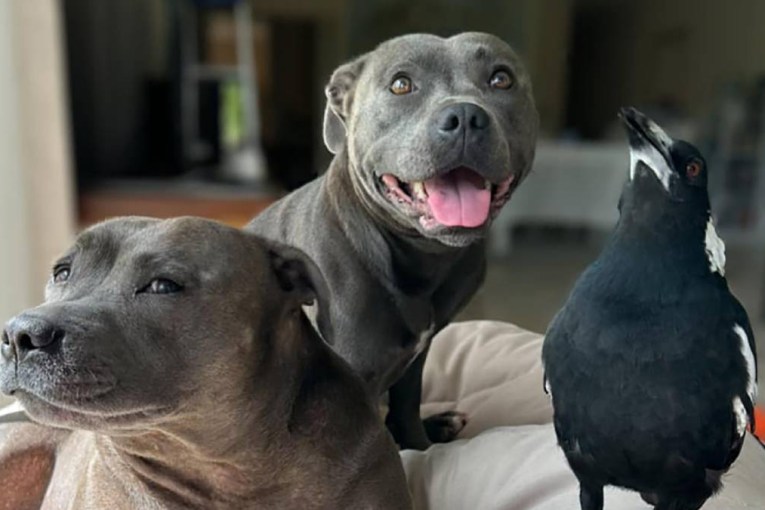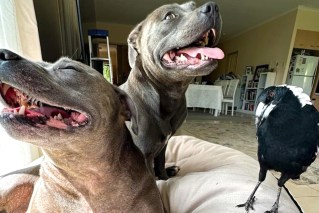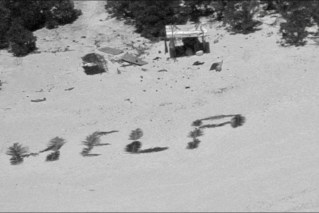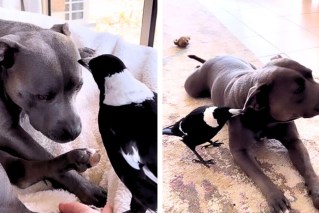How pigeons and Brian the Alsatian helped win a war
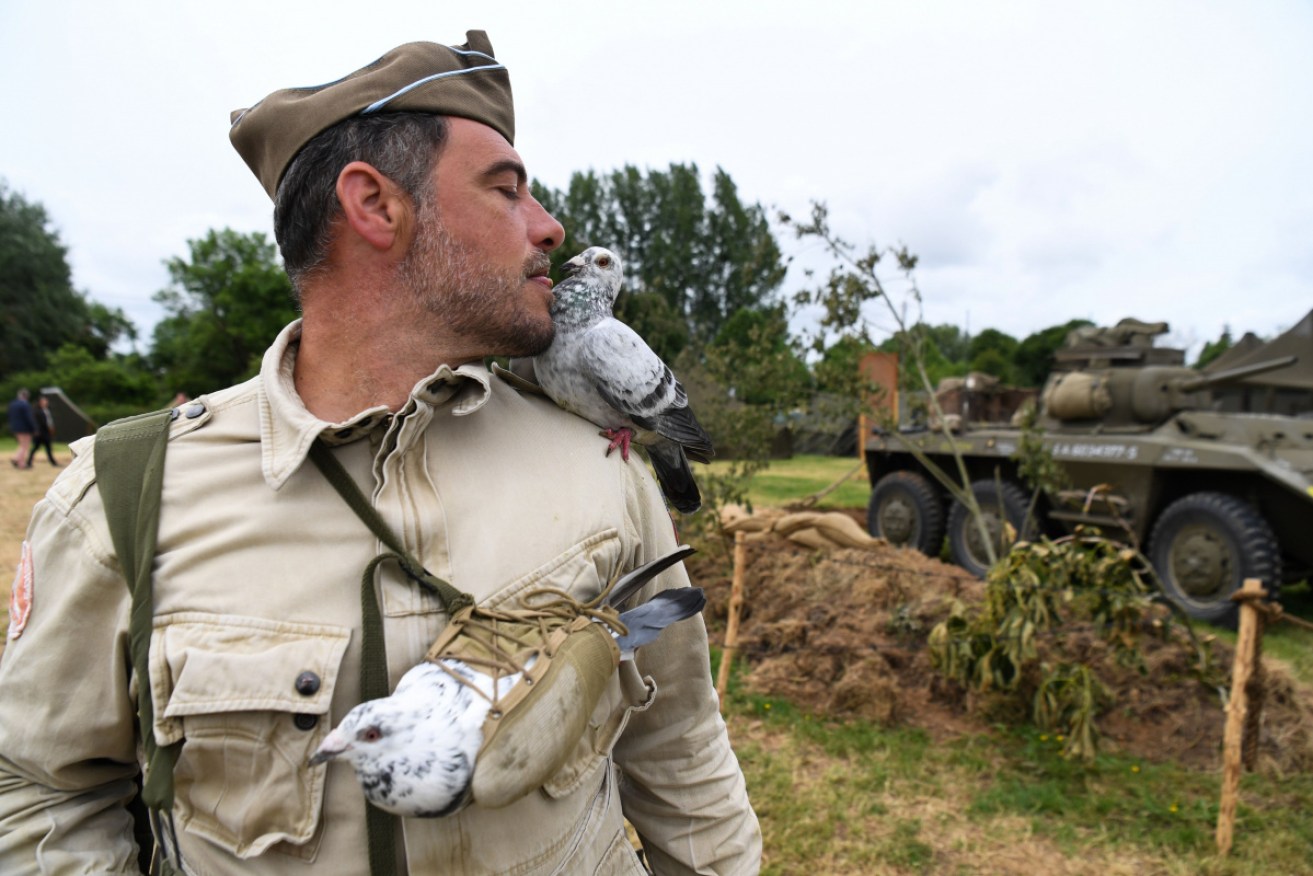
A WWII enthusiast wearing a period US uniform feeds a homing pigeon from his mouth in a temporary camp as part of D-Day commemorations. Photo: Getty
Pigeons and an Alsatian dog called Brian are among the heroes honoured for their vital roles during the D-Day invasion that helped bring an end to World War II.
The birds were given up to the war effort by thousands of pigeon fanciers, and used to help spread news of how the fight war going.
Other families donated pets to the cause: Brian the Alsatian (also known as Bing) became a canine parachutist after being sent from his home to the Army War Dog Training School because his owners could not feed him on their war rations.
The brave war efforts of Brian and his feathered comrades are among those recognised through the Dickin Medal – acknowledged as the animal equivalent of the Victoria Cross. It was launched in 1943 by Maria Dickin, the founder of British animal charity, The People’s Dispensary for Sick Animals.
The medal has been awarded 71 times since 1943 (as well as one honorary medal awarded in 2014). Of the recipients, 34 are dogs, 32 pigeons, four horses – and there’s even one cat with the honour.
https://twitter.com/historylvrsclub/status/1091917202847092743
PDSA Spokeswoman Amy Dickin said pigeons were the first to receive Dickin medals. Troops used the feathered fighters to help deliver intelligence, because radio equipment could be unreliable, particularly during heavy fighting.
The birds braved fighting, bombs and bullets from enemy soldiers, as well as hawk attacks, in their relentless drive to get home.
They carried coded messages in tiny scrolls attached to rings on their legs.
Days before D-Day, on June 6, 1944, a pigeon named the Duke of Normandy was dropped into Merville with paratroopers from the 21st Army Group.
Their mission was to ensure that four heavy-calibre guns trained directly on Sword Beach were out of action before D-Day, which was to be history’s largest combined land, air and sea operation.
The only way to relay the success (or otherwise) of the operation was to release Duke of Normandy with the news.
“His journey home took 27 hours and he flew through bullets and bombs,” Ms Dickin said.
The Duke’s heroics delivered critical intelligence to Allied Command that saved many lives.
Just days after, RAF homing pigeon Gustav, released by Reuters news agency correspondent Montague Taylor, relayed the first news report of the D-Day landings.
He travelled 240 kilometres across the English Channel in five hours and 16 minutes with his message.
Brian, who completed seven parachute jumps in his army career, was another Dickin Medal recipient.
As the D-Day landings began, Brian was parachuted into the town on Ranville, but got stuck in a tree on his way down.
Fellow paratrooper Sergeant Ken Bailey cut Brian down, despite being under fire, and the pair fought together over the next few months.
After that operation, Brian remained on active duty in occupied Germany but was eventually reunited with his family.
His Dickin Medal had the citation: “For excellent patrol work and qualifying as a paratrooper, Airborne Division, Normandy, June 1944.”
The 90th anniversary of the D-Day landings has been marked by veterans and world leaders on both sides of the Channel this week.
